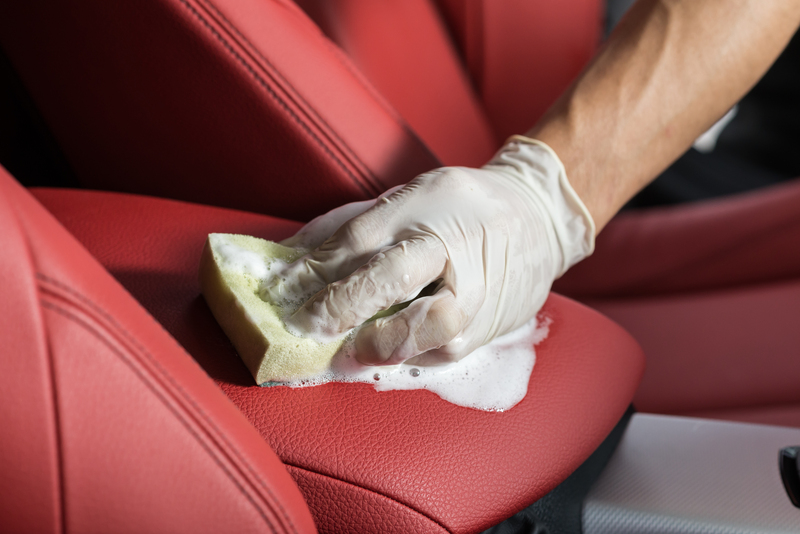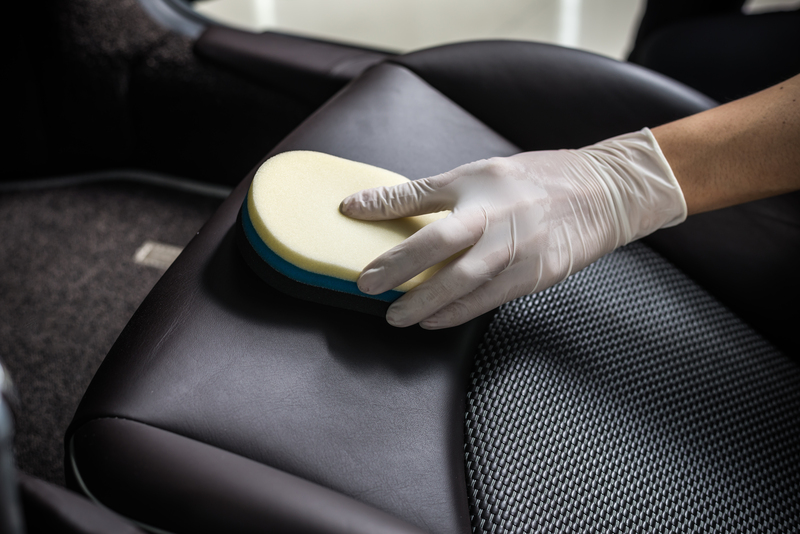How to Knock Out Mould from Your Window Sills
Posted on 23/08/2025
How to Knock Out Mould from Your Window Sills: A Comprehensive Guide
Discovering mould on your window sills is a common issue that many homeowners face, especially in damp or poorly ventilated rooms. This unsightly problem not only mars the appearance of your home but can also lead to serious health concerns. If you've noticed dark, musty patches on the wood or around your window frames, it's time to take action. In this detailed article, we'll guide you step by step on how to knock out mould from your window sills, prevent it from coming back, and keep your living space clean and healthy.
Understanding the Mould on Your Window Sills
Before you get started with removal, it's important to understand what mould is and why it grows on window sills.
What Is Mould?
Mould is a type of fungus that thrives in moist, warm, and poorly ventilated conditions.
- Common species found indoors include Aspergillus, Cladosporium, and Stachybotrys (commonly known as black mould).
Why Does Mould Form on Window Sills?
Mould often develops on window sills because:
- Condensation gathers on cold window glass and drips down onto the sill.
- Poor ventilation in rooms increases moisture accumulation.
- Leaky windows let rainwater or outside moisture in.
- Organic material (like wooden frames or dust buildup) provides food for mould growth.

Signs and Risks of Window Sill Mould
How to Identify Mould on Window Sills
- Discoloured patches: Black, grey, green, or brown fuzzy spots are a tell-tale sign.
- Musty smell: A persistent earthy or damp odour near your windows.
- Surface damage: Peeling paint, stained wood, or softened surfaces can also indicate mould.
Health and Structural Risks
Window mould isn't just unpleasant to look at. It can exacerbate allergies, asthma, and respiratory problems--especially in children, elderly people, or anyone with immune deficiencies.
Structurally, mould can:
- Weaken wood and lead to rot
- Damage paint, caulk, or sealants
- Reduce indoor air quality
Preparation: What You Need to Remove Mould from Window Sills
Tackling window sill mould is a task that requires the right *equipment* and protective measures. Here's what you'll need:
- Protective gloves
- Face mask (preferably N95 or higher)
- Safety goggles
- Old clothes you can wash or discard
- Plastic sheeting or old towels
- Bucket of warm, soapy water
- Soft brush or old toothbrush
- Non-abrasive sponge
- Microfiber cloths
- Spray bottle
- Commercial mould remover (optional), OR:
- White vinegar, baking soda, and hydrogen peroxide (for natural alternatives)
Avoid using bleach on porous surfaces like wood as it may not fully penetrate and remove mould roots.
Step-by-Step: How to Knock Out Mould from Your Window Sills
1. Prioritize Safety and Ventilation
- Open windows and doors in the room to allow fresh air and prevent spore buildup.
- Place plastic sheeting or towels under the window to catch drips and debris.
- Put on gloves, mask, and goggles to protect your skin, lungs, and eyes.
2. Remove Excess Moisture and Debris
- Wipe off any excess water condensation or dust using a dry microfiber cloth.
- If you see flakes of mould or paint, gently brush them into a bag for disposal.
3. Apply Your Chosen Mould Removal Solution
There are several effective ways to remove mould from window sills. Below are both natural methods and chemical options.
Natural Method 1: White Vinegar
- Pour undiluted white vinegar into a spray bottle.
- Spray the affected window sill generously.
- Let it sit for at least 1 hour to break down mould and kill spores.
- Scrub gently with a brush, then wipe clean with a damp sponge.
Natural Method 2: Baking Soda Paste
- Mix 1 tablespoon of baking soda with enough water to form a paste.
- Apply to the mouldy area and let it sit for 10-15 minutes.
- Scrub with a brush, then wipe away with a damp cloth.
Natural Method 3: Hydrogen Peroxide
- Pour 3% hydrogen peroxide into a spray bottle.
- Spray the mouldy sill and let stand for 10 minutes.
- Scrub, rinse, and dry as before.
Chemical Method: Commercial Mould Remover
- Follow the manufacturer's instructions for application and wait time.
- Scrub and wipe as above, ensuring you rinse away any residue to avoid damage to paint or finish.
4. Wipe and Dry
- Use a clean, damp microfiber cloth to wipe down the sill and remove any leftover product or loosened mould.
- Dry the area thoroughly with a towel--mould loves moisture, so no damp patches!
5. Dispose of Waste Safely
- Seal used rags, brushes, and debris in a plastic bag and dispose of them in an outside bin.
- Wash hands and tools thoroughly.
Deep Cleaning and Restoration After Mould Removal
Sanding and Repainting
- If there's leftover staining or surface damage, lightly sand the window sill after mould removal to smooth the area.
- Vacuum dust with a HEPA-filter vacuum and wipe with a damp cloth.
- Repaint with mould-resistant paint to protect the wood against future infestation.
Checking Seals and Caulk
- Carefully inspect the window's caulk and seals for cracks or damage.
- Replace deteriorated caulking to prevent moisture from entering and creating a habitat for mould to return.
How to Prevent Mould from Returning to Your Window Sills
Once you've managed to remove and knock out window sill mould, it's crucial to keep it from coming back. Here's how:
- Improve ventilation: Open windows often, use bathroom and kitchen exhaust fans, and consider a dehumidifier in damp rooms.
- Reduce condensation: Use double glazing, or install window insulation film in cold or humid months.
- Wipe down sills daily during wet weather or after showers to remove condensation.
- Repair leaks immediately: Check for leaking window frames, cracks, or guttering issues.
- Apply a mould-inhibiting spray or borax solution after cleaning to make your sills less hospitable to spores.
- Keep plants away from window sills, as excess plant moisture can contribute to dampness.
- Dust and vacuum window sills regularly--mould can feed on dust and organic debris.
When to Call a Professional for Window Sill Mould Removal
Some situations require expert help:
- The mould covers an area larger than one square metre.
- You suspect the mould includes dangerous black mould (Stachybotrys).
- Mould keeps returning despite regular removal efforts.
- Window sills or walls show signs of structural damage, rot, or severe moisture ingress.

Frequently Asked Questions: Window Sill Mould Removal
Can mould on window sills make you sick?
Yes. Indoor mould exposure may cause allergy-like symptoms, worsen asthma, or result in skin and eye irritation. People with weakened immune systems are particularly susceptible.
Is vinegar or bleach better for mould removal?
Vinegar is usually a better option on wood or painted surfaces, as bleach doesn't penetrate porous materials well and may leave mould roots behind. For non-porous sills, diluted bleach can help, but always ventilate well and avoid mixing with other chemicals.
What is the fastest way to knock out mould on a window sill?
Spray undiluted white vinegar directly on the area, leave for 1 hour, scrub with a soft brush, and dry completely. This is the quickest and most effective household method.
Can I paint over mould to hide it?
Never paint over mould! The spores will keep growing beneath the paint, leading to peeling, continued spread, and poorer air quality. Always remove mould fully before painting or sealing your window sills.
Conclusion: Enjoy Clean, Healthy Window Sills
Knowing how to knock out mould from your window sills is crucial for maintaining a healthy, attractive home environment.
With a little preparation, the right tools, and proactive maintenance, you can banish window sill mould for good. Remember to address moisture issues at the source, clean and ventilate regularly, and act quickly at the first sign of any musty patches.
Take control of your windows today--don't let mould hold your home hostage any longer!




